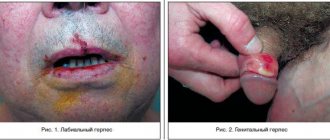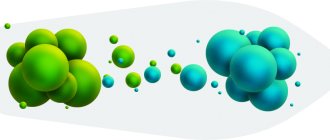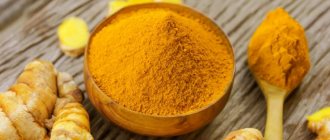Pantogam
Pantogam (INN hopantenic acid) is a domestic nootropic drug from the pharmaceutical industry. Available in the form of tablets and syrup. A wide range of therapeutic activity and a favorable safety profile have led to the popularity of nootropics in a variety of areas of medicine. There is no generally accepted classification of nootropics at the moment, but most pharmacologists tend to distinguish two main groups: classical nootropics (with a predominant mnestic effect) and neuroprotectors. In addition to the nootropic effect, neuroprotectors are able to stimulate metabolic processes in the brain, promote the restoration of cerebral tissues in case of various injuries, and increase the resistance of neurons to the effects of unfavorable exogenous or endogenous factors. During clinical trials, other effects of neuroprotectors were established: membrane stabilizing, antioxidant, antihypoxic. Pantogam is one of the most prominent representatives of the subgroup of neuroprotectors. Having appeared on the market several years before, perhaps, the most important nootropic, with whose name the name of the pharmacological group is associated - Piracetam, Pantogam has been successfully used in medicine for four decades. In its chemical structure, the drug is the highest homologue of gamma-aminobutyric acid (GABA), later called hopantenic acid. This compound was synthesized in Japan in the early 50s of the last century. It came to the attention of Soviet pharmaceutical technologists and pharmacologists due to the presence of the GABA molecule in its structure, which, in turn, is one of the key neurotransmitters. Being a natural metabolite of GABA, hopantenic acid is a more promising compound, i.e.
is endowed with the property of penetrating the blood-brain barrier and regulating the functional activity of brain neurons. Pantogam has a nootropic and anticonvulsant effect, increases the resistance of brain tissue to oxygen starvation and the effects of toxins, activates anabolism in nerve cells, increases mental and physical performance, and facilitates the regeneration of cerebral tissues after damage. Four decades of use of the drug in clinical practice have exhaustively confirmed its effectiveness and favorable safety profile. Pantogam is indicated for use in the prevention of diseases of the central nervous system (with psycho-emotional overload, excessive stress, autonomic pathology, etc.), treatment of organic and functional disorders of the central nervous system. Among other nootropics, Pantogam stands out for its antiepileptic activity, which allows the drug to be used as an adjuvant in the treatment and prevention of attacks of this disease. The experience of using Pantogam in pediatric practice deserves special mention. Over the past few decades, cases of the development of cognitive disorders in children in the absence of organic diseases of the central nervous system have become more frequent. This is primarily due to increased intellectual and emotional stress in kindergartens and schools. These include attention deficit disorder, psychovegetative and asthenoneurotic syndromes. Clinical and post-marketing studies of Pantogam have confirmed its effectiveness in correcting the above-mentioned syndromes and normalizing the cognitive functions of children and adolescents.
Hopanthenic acid tablets 250 mg 50 pcs (Ozone)
Registration Certificate Holder
ATOLL (Russia)
Dosage form
Medicine - Hopantenic acid
Description
Pills
white or almost white, round, flat-cylindrical, with a chamfer and a notch.
1 tab.
calcium hopantenate 250 mg
Excipients
: magnesium hydroxycarbonate - 46.8 mg, povidone K25 - 10.1 mg, calcium stearate - 3.1 mg.
10 pieces. — cellular contour packages (1) — cardboard packs. 10 pieces. — contour cell packaging (2) — cardboard packs. 10 pieces. — cellular contour packages (3) — cardboard packs. 10 pieces. — contour cell packaging (4) — cardboard packs. 10 pieces. — contour cell packaging (5) — cardboard packs. 10 pieces. — contour cell packaging (10) — cardboard packs. 20 pcs. — cellular contour packages (1) — cardboard packs. 20 pcs. — contour cell packaging (2) — cardboard packs. 20 pcs. — cellular contour packages (3) — cardboard packs. 20 pcs. — contour cell packaging (4) — cardboard packs. 20 pcs. — contour cell packaging (5) — cardboard packs. 20 pcs. — contour cell packaging (10) — cardboard packs. 25 pcs. — cellular contour packages (1) — cardboard packs. 25 pcs. — contour cell packaging (2) — cardboard packs. 25 pcs. — cellular contour packages (3) — cardboard packs. 25 pcs. — contour cell packaging (4) — cardboard packs. 25 pcs. — contour cell packaging (5) — cardboard packs. 25 pcs. — contour cell packaging (10) — cardboard packs. 30 pcs. — cellular contour packages (1) — cardboard packs. 30 pcs. — contour cell packaging (2) — cardboard packs. 30 pcs. — cellular contour packages (3) — cardboard packs. 30 pcs. — contour cell packaging (4) — cardboard packs. 30 pcs. — contour cell packaging (5) — cardboard packs. 30 pcs. — contour cell packaging (10) — cardboard packs. 10 pieces. - cans (1) - cardboard packs. 20 pcs. - cans (1) - cardboard packs. 25 pcs. - cans (1) - cardboard packs. 30 pcs. - cans (1) - cardboard packs. 50 pcs. - cans (1) - cardboard packs. 100 pieces. - cans (1) - cardboard packs.
Indications
Cerebrovascular insufficiency caused by atherosclerotic changes in cerebral vessels, senile dementia (initial forms), residual organic brain damage in mature and elderly people, cerebral organic insufficiency in patients with schizophrenia, extrapyramidal hyperkinesis in patients with hereditary diseases of the nervous system (including Huntington's chorea, hepatocerebral dystrophy, Parkinson's disease), residual effects of previous neuroinfections, post-vaccination encephalitis, traumatic brain injury (as part of complex therapy); extrapyramidal neuroleptic syndrome (hyperkinetic and akinetic), as a corrector of the side effects of antipsychotics (neuroleptics) and for preventive purposes at the same time as “cover therapy”; epilepsy (with slow mental processes in combination with anticonvulsants). Psycho-emotional overload, decreased mental and physical performance (increased concentration and memory). Urinary disorders: enuresis, daytime urinary incontinence, pollakiuria, urgency (adults and children over 2 years old).
Children: perinatal encephalopathy, mental retardation (delayed mental, speech, motor development or a combination thereof), cerebral palsy, stuttering (mainly clonic form), epilepsy (as part of combination therapy with anticonvulsants, especially with polymorphic seizures and petit mal seizures) .
Contraindications for use
Acute severe kidney disease, first trimester of pregnancy.
pharmachologic effect
A nootropic agent that has neurometabolic, neuroprotective and neurotrophic properties. Increases the brain's resistance to hypoxia and the effects of toxic substances, stimulates anabolic processes in neurons, combines a moderate sedative effect with a mild stimulating effect, has an anticonvulsant effect, reduces motor excitability while regulating behavior. Increases mental and physical performance. Helps normalize GABA content during chronic alcohol intoxication and subsequent ethanol withdrawal. Shows analgesic effect.
Drug interactions
Prolongs the effect of barbiturates, enhances the effects of anticonvulsants, nootropics and central nervous system stimulants, and the effect of local anesthetics (procaine).
Prevents side effects of phenobarbital, carbamazepine, antipsychotics (neuroleptics).
The effect of hopantenic acid is enhanced in combination with glycine and xydiphone.
Dosage regimen
Taken orally. Single dose for adults - 0.5-1 g, for children - 0.25-0.5 g; daily dose for adults - 1.5-3 g, for children - 0.75-3 g. The course of treatment is 1-4 months, in some cases - up to 6 months. After 3-6 months, a second course of treatment is possible.
For children with mental impairment and mental retardation - 0.5 g 4-6 times a day daily for 3 months; for delayed speech development - 0.5 g 3-4 times a day for 2-3 months.
As a corrector for neuroleptic syndrome, adults - 0.5-1 g 3 times/day, children - 0.25-0.5 g 3-4 times/day. The course of treatment is 1-3 months.
For epilepsy, children - 0.25-0.5 g 3-4 times a day, adults - 0.5-1 g 3-4 times a day, daily, for a long time (up to 6 months).
For tics in adults - 1.5-3 g/day, daily, for 1-5 months; children - 0.25-0.5 g 3-6 times a day daily for 1-4 months.
For urinary problems in adults - 0.5-1 g 2-3 times a day, daily dose - 2-3 g; for children, a single dose is 0.25-0.5 g, daily - 25-50 mg/kg. The course of treatment is 0.5-3 months.
Side effect
Allergic reactions:
rhinitis, conjunctivitis, skin rashes.
special instructions
Long-term therapy with hopantenic acid in combination with other nootropic and central nervous system stimulants is not recommended.
Use during pregnancy and breastfeeding
Restrictions during pregnancy - Contraindicated.
Use is contraindicated in the first trimester of pregnancy.
Use for renal impairment
Restrictions for impaired renal function - Contraindicated.
The drug is contraindicated in acute severe kidney disease.
Use in children
Restrictions for children - No restrictions.
Application is possible according to the dosage regimen.


